#Information elements
Explore tagged Tumblr posts
Text
My Cheatsheet
Information Elements
Irrational elements (because they perceive, not reason):
Se - extroverted sensing: Force (F)
Accumulation of external involvements
Force: strength or energy as an attribute of physical action or movement. In physics, understood as an influence tending to change the motion of a body or produce motion or stress in a stationary body.
Si - introverted sensing: Senses (S)
Integration of external involvements
Senses: faculties by which the body perceives external stimuli.
Ne - extroverted intuition: Ideas (I)
Accumulation of internal abstractions
Ideas: thoughts as to possible courses of action or outcomes.
Ni - introverted intuition: Telos (T)
Integration of internal abstractions
Telos: ancient Greek term for an end, fulfillment, completion, aim or goal. Ethymologic source for the word 'teleology', the explanation of phenomena in terms of the purpose they serve rather than of cause by which they arise.
Rational elements (because they reason, not perceive):
Te - extroverted thinking: Pragmatism (P)
Accumulation of external abstractions
Pragmatism: an approach that evaluates theories or beliefs in terms of the success of their practical application.
Ti - introverted thinking: Laws (L)
Integration of external abstractions
Laws: the system of rules which a particular country or community recognizes as regulating the actions of its members and which it may enforce by the imposition of penalties.
Fe - extroverted feeling: Emotions (E)
Accumulation of internal involvements
Emotions: strong feelings deriving from one's circumstances, mood, or relationships with others.
Fi - introverted feeling: Relations (R)
Integration of internal involvements
Relations: the ways in which two or more people or things are connected; a thing's effect on or relevance to another. Also the way in which two or more people or groups feel about and behave towards each other.
Each of the eight information elements fit into and fill one of the eight cognitive functions that make up a person's personality type. The different assortments result in the 16 different types.
Cognitive Functions

1. Leading - most capable (4D), valued, public, and stubborn. Automatic, confident, and comfortable first approach that sets and programs the base objectives of the personality. Also called Base, Dominant, or sometimes Program function
2. Creative - highly capable (3D), valued, public, and flexible. Complements the leading function's set program and takes it into actions, brings it into the world. Also called Auxiliary function.
3. Role - less capable (2D), unvalued, public, and flexible. Conscious adaptation to respond to outside expectations. Sometimes called Reluctant function.
4. Vulnerable - least capable (1D), unvalued, public, and stubborn. Source of insecurity, least resistance to external pressure, and inflexible lack of comprehension of its given information element. Sometimes called Exposed function or Path/Point of Least Resistance (PoLR).
5. Suggestive - least capable (1D), valued, private, and flexible. Search for intimate reassurance and/or influence of others, appreciation and enthralling of the presence of the element in them, feels calmed by it. Also called Accepting or Seeking function.
6. Mobilizing - less capable (2D), valued, private, and stubborn. Highly personal need for being independently capable in this element, but is overconfident. Consistently clumsy in its effectiveness or overcompensating in its expression. Its usage energizes the person. Also called Activating function or Hidden Agenda.
7. Observing - highly capable (3D), unvalued, private, and stubborn. Non-participation in the usage of its given element outside of scrutizing from the sidelines and sometimes consistently critizicing or questioning its validity. Traditionally called Ignoring function.
8. Demonstrative - most capable (4D), unvalued, private, and flexible. Unconscious and persistent leading utilization of the element, even when it would rather not be used. Willingly let go of when asked of by overwhelmed people due to its unvalued and flexible nature, yet it still assists in the achieving of the type's goals.
Each of the eight functions fit into one of four Blocks within the model, creating Rings of information metabolism:
Blocks

Public and conscious blockings: the Mental Ring
Ego Block: valued and "strong" functions
Super-Ego Block: unvalued and "weak" functions
Private and unconscious blockings: the Vital Ring
Super-Id Block: valued but "weak" functions
Id Block: unvalued but "strong" functions
Inert functions: stubborn, intransigent, bold, assertive, and energetic functions
Contact functions: flexible, collaborative, subtle, and reluctant functions
The "strength" or "weakness" of a given function is explained through the qualitative parameters with which they are able to process information to elaborate conclusions and internalize lessons. Each set of which are called Dimensionality of a function:
Dimensionality
Each function processes information and grows by taking into account the parameters of:
1-Dimensional (1D): experience. Referred to as least capable, "weakest".
2-Dimensional (2D): norms and experience. Referred to as less capable, "weak".
3-Dimensional (3D): situational, norms, and experience. Referred to as highly capable, "strong".
4-Dimensional (4D): time, situational, norms, and experience. Referred to as most capable, "strongest.
Commonalities can be discerned between types depending on strengths and values, called small groups or quaternions:
Small Groups
Quadras: according to valued elements
Alpha: value Ti, Fe, Si, Ne - Acceptance and Togetherness
Beta: value Ti, Fe, Se, Ni - Calling and Order
Gamma: value Te, Fi, Se, Ni - Aptitude and Independence
Delta: value Te, Fi, Si, Ne - Growth and Hope
Clubs: according to dominant primary information
Researchers: intuitive and logical (NT)
Socials: sensing and ethical (SF)
Pragmatists: sensing and logical (ST)
Humanitarians: intuitive and ethical (NF)
Temperaments: according to primary extroversion (E or I) and rationality (P or J)
Flexible-maneuvering: extroverted and perceiving (EP)
Linear-assertive: extroverted and rational (EJ)
Receptive-adaptive: introverted and perceiving (IP)
Balanced-stable: introverted and rational (IJ)
Communication styles: according to primary extroversion (E or I) and rational preferrence (F or T)
Bussinesslike: extroverted and logical (ET)
Passionate: extroverted and ethical (EF)
Cold-blooded: introverted and logical (IT)
Sincere/Soulful: introverted and ethical (IF)
I will make separate in-depth entries for each of the points in every section, the 16 Socionics types and more.
12 notes
·
View notes
Text
Anecdotal experiences with fellow socio-types (socionics):

SLIs
High affinity for food—especially junk, comfort and discretionary foods. This is a common observation with these dudes—If I had to throw a dart to the types that contribute most to obesity rates, it would be SLIs.
These individuals mostly opt for neutral, casual attire—I've rarely seen any SLIs in person wear flashy, colourful or bright clothing.
On the surface, usually seems dry, socially awkward and reserved, but tends to be soft, vulnerable and goofy if they cosy up to you (3E is a common psychosophy placement for these guys).
Able to let loose with close acquaintances but can be fucking lazy, unpunctual and sedentary. Conversely though, these guys possess amazing will-power when necessary.
The guys I know with this sociotype are all into gaming to some degree and enjoy kinaesthetic activities, like building/manipulation of tangible objects (e.g lego, crafting, fixing objects).
also tend to be attached to classic childhood shows and cartoons
aptitude for/usually likes vehicles.
Commonly opts for technical/mechanical careers and STEM subjects. Enjoys sports and practical activities.
ESI
Extremely pedantic, 'us-against-them' mentality, very critical of behaviour, diligent and organised, conservative and perfectionist, soft to the select few and very uncompromising to the rest
Appreciates hardworking, responsible and productive individuals
Very gamma Fi-Se valuing; avoidant of adversaries and poor relationships.
poorly tolerates chaos and hates immaturity, vulgar and irresponsible individuals
Exceptionally loyal and devoted to the few that they consider close and doesn't allow new acquaintances in easily
This is the type that silently judges you
usually neurotic and possesses a polarizing, black & white framework
slow to forgive—if at all. They are cautious and highly selective.
#socionics#typology#sociotypes#ESI#socionics functions#socionic quadras#SLI#Si base#Fi base#gamma quadra#delta quadra#information elements#cognitive functions
8 notes
·
View notes
Text
can't stop thinking about tamsyn muir's choice to present her deep, morally and politically complex science fantasy world with a central web of magic, secrets and lies reaching back ten thousand years through the eyes of three characters who:
1. tune out and start thinking about hot women whenever the magic system or worldbuilding are being explained
2. experience hallucinations on a daily basis, have brain damage and are being deceived and misled by their peers, authority figures, themselves and God
3. don't know who they are, have spent their entire life in one place and are, on all levels but physical, six months old
#she said: you will have concrete information when i say you can have concrete information#and then every new bit of information you do get fundamentally changes some earlier element of the story#like. rereading these books the first time doesn't even count as rereading imo#it's just an entirely new experience#the locked tomb#gideon the ninth#harrow the ninth#nona the ninth
12K notes
·
View notes
Text
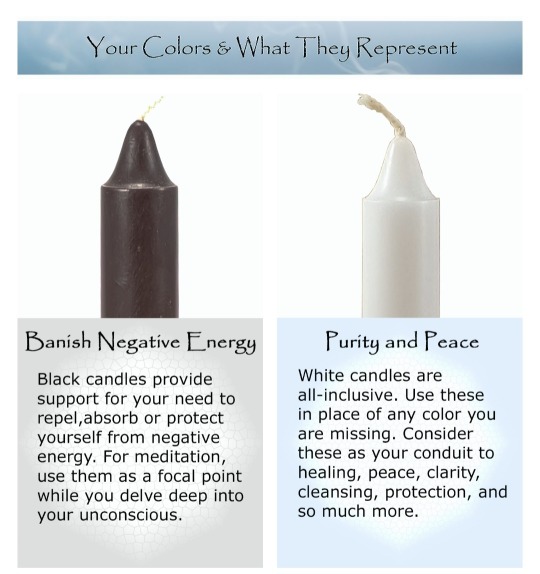
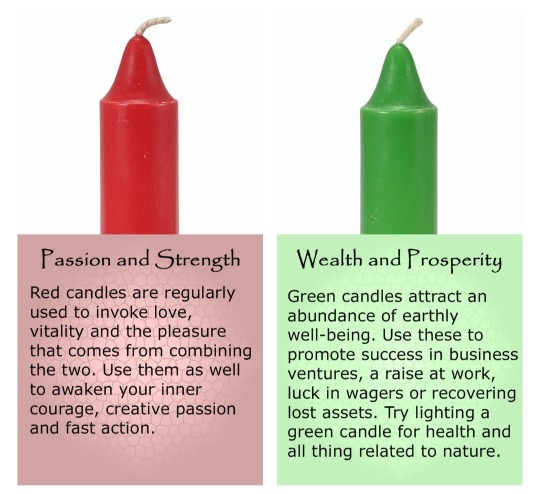
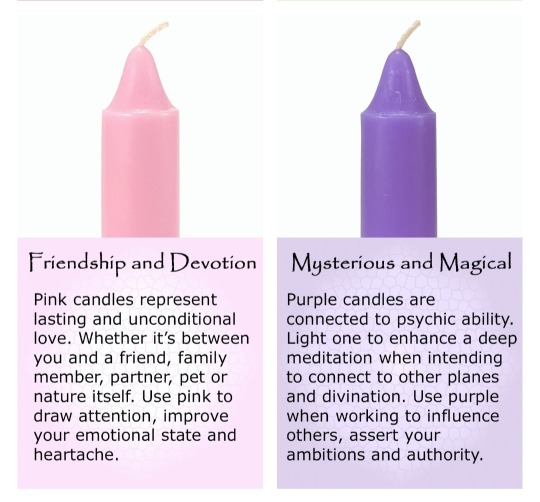
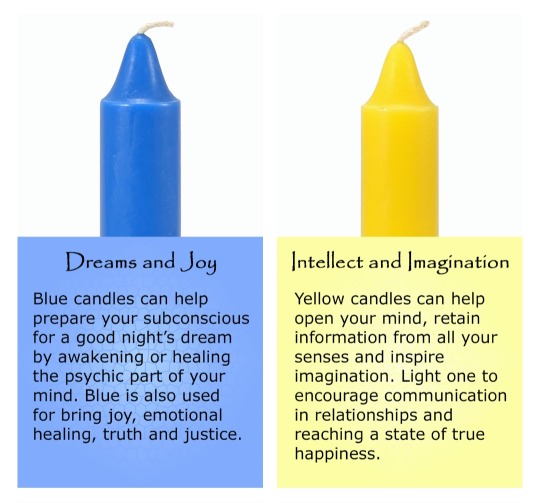
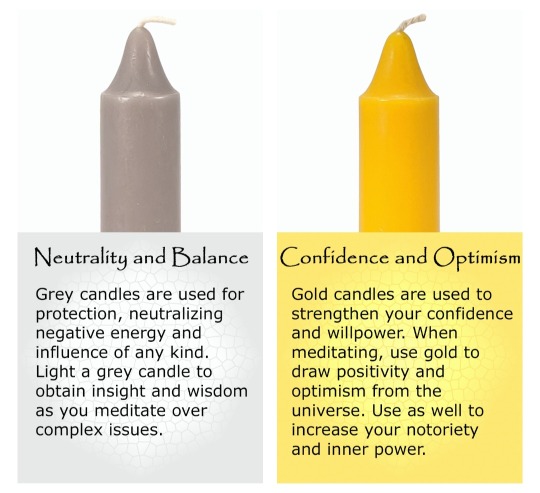

Candle Color Correspondences from Wicca Wicks Storefront - https://www.amazon.com/stores/WiccaWicks/Homepage/page/8C2DBB99-E443-49CF-84A2-A2E359778B07?ref_=cm_sw_r_apann_ast_store_VNGDJVC31BEW62V3H7K5&store_ref=bl_ast_dp_brandLogo_sto
#wicca#witchcraft#candle magick#candle correspondence#candle meaning#candle colors#grimoire#book of shadows#green witch#fire elemental#witchy#witchblr#witches#witchcraft information#baby witch#hedgewitch#herbs#altar#witch blog#witchy blog#eclectic witch#magick#pagan witch#witch community
818 notes
·
View notes
Text
"The most violent element in society is ignorance." Emma Goldman.
#thought of the day#thought of today#emma goldman#violence#violent#elements#elements of society#society#ignorance#fight ignorance#awareness#blinkers#information#knowledge#overwiew#perception#perspective#understanding#be informed#do your own research#get wise#think ouside the box#think about it
2K notes
·
View notes
Text
this is relevant to a lot of fanspaces, but I'm feeling it most with CritRole C3 right now, though it applies to a lot of other works too: I feel like a lot of fans mistake "the work had the potential to expound on XYZ themes and tell a narrative about such-and-such with these particular building blocks" for the work actually telling that narrative and working with those themes
the building blocks merely existing in a text does not necessarily mean that the text has that particular narrative at all, let alone is telling that narrative well. a lot of the time, a text has the potential for it but is not using those elements to actually tell that story and is just plain ol' missed opportunity
#I feel this way whenever people talk about C3 as about lack of agency in the face of being acceptable to power and respectability politics#or about C3 as like a narrative about The Grotesque as beloved and hard emphasis on “our weirdness is what makes us right”#or about like hegemony of religious power and historiographies and the keeping of secrets and information as a means of power#or a dozen other things that are being spun and have been spun throughout the campaign that I don't feel like summarizing rn#Sure this COULD have been a story about any of those things. There's stuff and elements you CAN use TO tell that story if they wanted.#But I don't.... actually feel like they told that story. The mere existence of the pieces doesn't mean that is the story being told.#Critical Role things
90 notes
·
View notes
Note
may i have the 10 wholly unasked for paragraphs of semen retention belief lore please 🙏

Ok
MEDICAL MODEL:
The philosophical core of Wardi medical model revolves around the universe’s primal dualism- it exists in between the extremes of Sea (cold wet dark female) and Sky (hot dry bright male). These forces are sterile and stagnant when separate, God emerged at their interacting boundaries as their synthesis, capable of creation. Life itself required God’s sacrifice of Its living spirit and the shedding of Its blood, which rendered sterile earth fertile and inhabitable and kicked of the perpetual death-rebirth flow of living spirit that maintains all life. The body is a reflection of this primordial state- it is maintained by the flow of living spirit (contained in the blood), and its core matter is an interactive mixture of primordial Hot Sky and Cold Sea, Warm in balance, with male and female physically differentiated by the presence of primordial extremes- the male has Hot testes, the female has Cold womb, the interaction of these extremes allow for creation.
(I promise this will have to do with semen retention eventually.)
Blood is understood as carrying the body’s living spirit, the animating force whose proper flow maintains life and health by balancing the body’s primordial extremes. Semen is a type of blood, given Hot nature by its isolation in the testes, and also carries the living spirit. It functions as the active seed of the living spirit. It is the Hot element planted in the Cold of the womb, the mingling of these forces allow for creation, and insemination with living spirit creates a living body that can host an immortal soul. (Wardi belief describes two souls- a living spirit that animates and maintains the body and an immortal soul that houses the mind).
Male gender designation revolves almost entirely around the testes, the Hot extreme of the body where semen is (assumed to be) produced and stored. In addition to its procreative functions, the testes are an organ whose function is to masculinize and strengthen the rest of the body. Each organ requires the proper flow of healthy blood/living spirit to function properly, and thus loss of this living spirit must be performed with great care- bloodletting in offering is highly controlled, bloodletting in medicine is carefully selected and done in accordance with balancing procedure. Since testes are regulated specifically by the living spirit in semen, semen should not be discharged with reckless abandon.
SOCIAL SEXUAL NORMS:
Cultural ideals for sexual behavior revolve around moderation and self-restraint. Sexuality itself is not demonized. There is nothing wrong with nonprocreative/nonmaritial sex in of itself (unless it is adultery on the part of a woman (male adultery is ostensibly bad too but is rarely treated as gravely), or a girl losing virginity prior to marriage, or it violates a litany of gender-sexual norms), but sexual RESTRAINT is an expectation.
Having an active but controlled libido is idealized, particularly in men. A man who is an absolute paragon of ideal masculinity has a libido, but is not ruled by it. He does not masturbate and rather seeks a partner for sexual release. He usually has a wife for this, and otherwise is capable of the patience and restraint to attain a quality sexual partner rather than finding the easiest release out of desperation. His partners are suitable to proper male interest, being good looking women or pretty beardless youths (going for 'unseemly' women or older, masculine men (so long as one performs the penetrative role) is not wholly unacceptable but suggests desperation and a weak control of libido).
This is an IDEAL and not strictly enforced- very few people will think you’re a weak failure of a man for jerking off sometimes or bragging about fucking some random tail, and hiring sex workers is entirely normalized (and will only be condemned if deemed notably ‘excessive’ and disruptive to a normal patriarchal role, or truly symptomatic of being unable to get laid without paying for it). Rather, if someone is already identified as a weak or effeminate man, ‘excessive libido’ may be cited as a cause or symptom, or rhetoric to criticize them.
THE SEMEN RETENTION:
Encouragement of semen retention/regulation stems out of both of these forces. Proper masculine social/sexual behavior encourages a limitation to discharge of semen, and medical thought deems it necessary for physical masculinization. A man who does not 'excessively' lose semen via an uncontrolled libido is thought to be physically more masculine- it is assumed to directly make the testes larger since they are Storing More Cum, but also to deepen the voice, assist in the growth and maintenance of the beard, and generally enhance strength, mental acuity, and vitality. Men are regarded as innately physically and mentally stronger than women, with the medical model slapped on as one of the means of explaining patriarchal norms (in addition to spiritual concerns of pollution and metaphysical vulnerability). Regulating semen is one of many behaviors that allows a man to stay this way.
This is also an element in why 'effeminacy' in men is linked to hypersexualization- there is an assumption that men who are physically or behaviorally non-masculine have exaggerated, uncontrolled libidos. Effeminancy or ‘softness’ in men is a failure to perform a wide set of behaviors and not strictly an accusation of receiving penetrative sex, but this is often an element- a man who receives is presumed so desperate and out of control of his libido that he will submit to debasement and shame for fulfillment (an un-masculine man who cannot be a penetrative partner could at least retain his dignity by having enough self-control to abstain entirely).
Some scholars, high ranking warriors, and politicians will (at least claim to) be functionally celibate and refrain from all discharge of semen in order to function at peak performance. This total abstinence is rare and NOT culturally mandated, and is often looked on with a little snide derision as a tryhard performance. More commonly, men will attempt to live a life with a controlled libido, and may temporarily abstain from sexual activity leading up to situations that require physical and mental acuity (combat, debate, sport, etc).
Of most concern to the average day to day person is accidental loss through nocturnal emission. While this is harmless every once in a while, it is cause for concern if it occurs frequently- your body is discharging part of its living spirit completely outside of your control, you are directly weakened by this and you don’t want this happening on a regular basis. Recurrent, frequent episodes may indicate polluted blood, or outright inhabitation by evil spirits.
The only level on which semen retention tends to be actively, directly enforced is with children. Teenage boys are typically discouraged from masturbating (especially during the early stages of puberty)- retention of semen masculinizes the body, therefore will contribute to a healthy and normative puberty and should be preserved at this vulnerable time. It is considered normal to chastise and punish a pubescent boy for masturbation. This is seen as preventing him from harming his health, and to teach him to regulate desire and exercise self control, one of many facets of shaping a boy into a proper man during this critical time. This norm does not contribute to children developing lingering psychological issues AT ALL.
Wardi traditional medicine is a holistic methodology of spiritual/physical treatment, using a base system of items (foods, animal parts, herbs, metals, stones) with Hot or Cold properties and individual Essences to manage imbalances in the body and it's blood/spirit flow and dispel evil spirits. This medical system (and related subdivisions of folk medicine) is commonly used to treat nocturnal emissions, and may also be used to lower libido and/or discourage teenage masturbation. These are largely medicines with Cold properties and noted anaphrodisiac Essence. Eels are a big one- given that eels, obviously, are sexless and emerge from river mud, their bodies are anaphrodisiacs and consumption of eel meat/eel based tinctures can lower libido (this should be done with caution, as it also lowers fertility in humans and animals). Medicines may be directly applied to the penis, this does not interfere with the intended function of the testes but subdues excess lust. Phallic amulets are worn regardless of gender and have holistic nonsexual protective properties, but may also help defend against nocturnal emission. Other medicines are worn in sachets that are tied around the hips during sleep, often weighted with lead. In very severe cases (mostly associated with other dysfunction), the penis or testes may be infected with polluted blood and should be bled.
---
Tangent: If the Wardi community had reddit you would occasionally see threads like "DAE eat their semen after masturbating so you don't actually lose any?" and most responses would be "no wtf" but there would be a decent number of people going "omg yes I thought I was the only one" "I mean that's kind of weird but I guess it makes sense if you really think about it" and then one very angry commenter ranting about how, No, eating your semen DOES NOT suffice as mitigation of the loss, this is why so many boys are SOFT AND EFFEMINATE these days, the men of old NEVER jacked off and NEVER ate their own cum and had MUCH FULLER BEARDS AND LARGER TESTICLES.
#I also promise I did not intentionally milk this into 10(+) paragraphs I just like to be thorough . Like you need to know how cosmological#philosophy filters down into common practices of semen retention#It should also be noted that in general when I describe these deeper philosophical models it should not be interpreted as things#that Every Member Of The Population Is Routinely Thinking About#The primordial SEA/SKY dualism has philosophical significance and directly informs the medical traditions and practices of some#priesthoods but does not factor directly and explicitly into everyday practice.#Most people's religious practice is based around active interaction with God and Its Faces (and for that matter much of the public#experiences this religion more like a pantheon than a singular monotheistic god with different aspects)#The everyday person is thinking of semen regulation as 'it keeps you healthy and masculine' and not 'it ensures flow of living spirit#through the Hot masculine element of the body and improves the health of this system'- they'll be aware of the core concepts#like blood/semen as a carrier of living spirit but not necessarily thinking about it in THIS level of detail#imperial wardin
64 notes
·
View notes
Text

[Title]: The Elements: Water
Related Reading
The Elements: Fire Blood Magic Herbology Correspondences Visualization: Effective Implementation Duality in Witchcraft Researching Witchcraft Spirit Work: First Steps Divination: First Steps
🌊 Introduction 🌊
Water, one of the most versatile and commonplace elements, holds varying degrees of significance across various spiritual, mystical, and esoteric practices. Often associated with purification, reflection, and the subconscious, water's symbolic and practical applications are manifold. By understanding water's multifaceted nature, practitioners can harness its power more effectively, enriching their spiritual and magical practices. Most correspondences in this article are informed by non-colonial practices (Wicca, ‘Ceremonial Magick’, etc.) unless otherwise stated. I may also include some of my personal correspondences.

⛈️ Correspondences ☔️
Direction:
Water is typically associated with the west, symbolizing the end of the day and the sun’s descent. This direction represents introspection, reflection, and the subconscious. The west embodies the emotional and intuitive aspects of life, encouraging deep contemplation and the exploration of inner wisdom. I, personally, associate water with the North.
Season:
The season linked to water is typically winter or spring. Winter symbolizes a period of rest, reflection, and inner growth. This time encourages stillness and introspection, mirroring the quiet, dormant phase in nature's cycle where life slows down and renews itself. While spring is associated with fertility, renewal, and abundance. This time encourages a desire for new experiences and adventures and feelings of hope and optimism.
Time of day:
The time of day associated with water is twilight, the period between sunset and night. This liminal time embodies mystery and the blending of day and night, mirroring the fluid and transitional nature of water. Twilight invites introspection, relaxation, and the exploration of dreams and intuition.
Astrological sign:
Water corresponds to the astrological signs of Cancer, Scorpio, and Pisces. These signs are known for their emotional depth, sensitivity, and intuition. Cancer nurtures and protects, Scorpio transforms and heals, and Pisces dreams and connects to the spiritual, all embodying the fluid and adaptive qualities of water.
Planets:
The planets associated with water are the Moon and Neptune. The Moon governs emotions, intuition, and cycles, reflecting water’s nurturing and reflective nature. Neptune symbolizes dreams, illusions, and the subconscious, emphasizing water’s connection to the unseen and the mystical aspects of existence.
Tarot:
In the Tarot, water is linked to the suit of Cups. This suit deals with emotions, relationships, and intuition. Cups cards explore the depth of human feelings, creativity, and the subconscious, resonating with water’s ability to flow, adapt, and reflect the inner world of emotions and dreams. This is based on the Rider Waite style of deck, which stems from colonial practices (Golden Dawn).
Elementals:
The elemental spirits of water are undines, also known as water nymphs or mermaids. These beings are said to inhabit and preside over bodies of water, such as rivers, lakes, and oceans. Undines represent the fluid, emotional, and transformative nature of water, embodying its nurturing and purifying qualities.
Colors:
The colors associated with water are blue and silver. Blue represents calmness, depth, and tranquility, reflecting water’s soothing and introspective qualities. Silver symbolizes the reflective and mystical aspects of water, akin to the moonlight dancing on the surface of a lake, highlighting water’s connection to the subconscious and intuition.
Crystals:
Crystals linked to water include aquamarine, moonstone, and amethyst. Aquamarine embodies clarity and calming energy, akin to the serene ocean. Moonstone enhances intuition and emotional balance, reflecting the lunar connection. Amethyst promotes spiritual awareness and inner peace, resonating with water’s introspective and purifying nature.
Herbs:
Herbs associated with water include chamomile, aloe vera, and lemon balm. Chamomile soothes and calms, mirroring water’s nurturing aspect. Aloe vera heals and hydrates, reflecting water’s restorative qualities. Lemon balm uplifts and comforts, embodying water’s ability to cleanse and rejuvenate the spirit and emotions. While not necessarily an herb, I often associate water with copal resin, as its smoke is not only cleansing but also transitionary.
Trees:
Willow, birch, and elder are trees linked to water. The willow, with its affinity for moist environments, symbolizes intuition and emotional resilience. Birch represents renewal and purification, reflecting water’s cleansing nature. Elder is associated with protection and healing, resonating with water’s nurturing and transformative properties.
Animals:
Water-associated animals include crabs, fish, frogs, and swans. Crabs are associated with the moon and tides, symbolizing cycles, protection, and emotions. Fish are directly linked to water and are symbols of fluidity, adaptability, and the flow of emotions. Frogs represent transformation and renewal, akin to water’s purifying qualities. Swans embody grace and beauty, mirroring water’s serene and reflective nature.
Deities:
Deities linked to water include Poseidon, Yemaya, and Tlaloc. Poseidon, the Greek god of the sea, embodies the power and depth of the ocean. Yemaya, the Yoruba goddess, represents nurturing and protection. Tlaloc, the Aztec rain god, embodies water’s life-giving and sustaining qualities.
Mythical creatures:
Mythical creatures associated with water include mermaids, kelpies, and nixies. Mermaids embody the mysterious and seductive qualities of water. Kelpies, water spirits from Scottish folklore, symbolize transformation and the untamed nature of water. Nixies, Germanic water sprites, reflect the enchanting and elusive aspects of water.
Metals:
Silver and mercury are metals linked to water. Silver represents the reflective and mystical qualities of water, akin to moonlight on water’s surface. Mercury, with its liquid form, symbolizes adaptability and fluidity, reflecting water’s ability to change states and flow effortlessly through different environments.
Symbols:
Symbols associated with water include the crescent moon, waves, and the chalice. The crescent moon reflects water’s connection to the lunar cycles and emotions. Waves symbolize water’s dynamic and ever-changing nature. The chalice represents the receptive and nurturing qualities of water, embodying emotional and spiritual nourishment.
Body parts:
Body parts linked to water include the kidneys, bladder, and reproductive organs. The kidneys and bladder regulate fluid balance and purification in the body, reflecting water’s cleansing nature. The reproductive organs symbolize creation and nurturing, mirroring water’s life-giving and sustaining properties.
Senses:
The sense associated with water is taste. Taste connects to the element of water through the experience of savoring and appreciating flavors. This sense reflects water’s ability to blend and enhance, bringing out the essence of what it touches, much like the way water interacts with and transforms other elements. This association also stems from the idea of tasting sweet waters (fresh water), or the quenching of thirst.
Emotions:
Emotions linked to water include empathy, intuition, and sorrow. Water’s fluid nature symbolizes the flow and depth of human feelings, encouraging emotional expression and connection. This element fosters understanding and sensitivity, promoting healing and the nurturing of relationships through emotional attunement and care. Water, especially deep bodies like oceans, lakes, and rivers, is frequently associated with deep sorrows.
Personality traits:
Personality traits associated with water include sensitivity, adaptability, and intuition. Individuals influenced by water are often empathetic and attuned to their emotions and the feelings of others. They possess a deep sense of intuition and adaptability, able to navigate life’s changes with grace and emotional intelligence.
Musical notes and instruments:
The musical notes and instruments linked to water include the note D and instruments like the harp, piano, and flute. The note D resonates with water’s calming and soothing qualities. The harp and piano evoke flowing melodies, while the flute’s airy tones reflect water’s fluid and gentle nature. (Based on western scales)
Incense and essential oils:
Incense and essential oils associated with water include sandalwood, jasmine, and eucalyptus. Sandalwood promotes relaxation and grounding, mirroring water’s calming effect. Jasmine enhances intuition and emotional balance, reflecting water’s nurturing qualities. Eucalyptus purifies and refreshes, embodying water’s cleansing and revitalizing nature. Sandalwood: Avoid during pregnancy; may cause skin irritation. Jasmine: Use sparingly during pregnancy; can be a strong allergen. Eucalyptus: Not for children under 10; avoid ingesting; can cause respiratory issues if overused.
Tarot spreads:
The "Celtic Cross" tarot spread is often associated with water due to its comprehensive exploration of emotional and subconscious themes. This spread delves deeply into the querent's current situation, challenges, subconscious influences, and potential outcomes, reflecting the fluid and intuitive nature of water. This is based on the Rider Waite style of deck, which stems from colonial practices (Golden Dawn).
Runes:
Runes associated with water include Laguz and Perthro. Laguz represents the flow of water, intuition, and the subconscious, emphasizing fluidity and adaptability. Perthro symbolizes mystery, chance, and hidden knowledge, reflecting water’s connection to the unknown and the depths of the human psyche.
Ceremonies:
Ceremonies linked to water include purification rites, blessing rituals, and emotional healing practices. These ceremonies often involve the use of water to cleanse and renew, symbolizing emotional release and spiritual rebirth. They encourage introspection, forgiveness, and the restoration of emotional balance and harmony. Specifically, full moon ceremonies are most connected with elemental water, though these tend to be ceremonies reserved for women and effeminate practitioners traditionally.
🌦️🌤️☀️
It is crucial to acknowledge that while correspondences for water have been widely explored and established, there exist individual variations in these associations. The significance and personal resonance of specific correspondences may vary from person to person, influenced by cultural backgrounds, personal experiences, and spiritual beliefs. It is essential to embrace and honor these variations, allowing individuals to connect with the correspondences that align most authentically with their own spiritual practices and intentions. It is perfectly acceptable to create your own correspondences. There is no need to rigidly conform to preexisting ones unless working within a specific cultural context.

🫧 Common Practices 🌕
💧 Baptism
History and Background:
Baptism is a sacrament in Christianity, symbolizing purification and initiation into the faith. Its origins can be traced back to Jewish ritual washing and purification practices, such as the mikvah, which involved immersion in water to achieve spiritual cleanliness. John the Baptist, a prominent figure in the New Testament, is credited with popularizing baptism as a means of repentance and preparation for the coming of the Messiah. Jesus himself was baptized by John, setting a precedent for his followers.
Practice:
In baptism, water serves as the primary element of purification and transformation. The ritual can be performed in several ways: full immersion, where the person is completely submerged in water; affusion, where water is poured over the head; or aspersion, where water is sprinkled on the individual. The specific method often depends on the denomination and local customs.
During the ceremony, the officiant typically recites a blessing and the Trinitarian formula, "In the name of the Father, and of the Son, and of the Holy Spirit." The act of baptism signifies the washing away of sin, spiritual rebirth, and the individual's entry into the Christian community. In many traditions, it is also seen as a covenant with God and a commitment to live according to Christian teachings.
💧 Lustration
History and Background:
Lustration, derived from the Latin word "lustratio," meaning purification, was a significant ritual in ancient Greek and Roman religious practices. It aimed to cleanse individuals, communities, or objects of any impurities, especially before engaging in important religious or civic activities. Lustration ceremonies were often performed before sacrifices, military campaigns, or significant state functions to ensure divine favor and protection.
Practice:
The lustration ritual typically involved washing with water, but could also include the sprinkling of water mixed with other purifying substances such as salt, herbs, or ashes. In some instances, entire communities participated in the ritual, where they were sprinkled with water by priests or religious officials.
Water in lustration symbolizes physical and spiritual cleanliness, renewal, and the removal of any negative influences. The practice underscores the belief in the transformative power of water to sanctify and protect, ensuring that those who underwent lustration were pure and fit to participate in sacred or significant activities.
💧 Ablution
History and Background:
Ablution, from the Latin "ablutio" meaning "a washing away," is a ritual purification found in various religious traditions, with a prominent role in Islam. In Islam, ablution is divided into two types: wudu, a minor purification required before prayers, and ghusl, a major purification for more significant states of impurity.
Practice:
Wudu involves washing the hands, mouth, nostrils, face, arms, head, and feet with water in a specific order. It is performed before the five daily prayers to ensure that the worshiper is in a state of physical and spiritual purity. The steps are methodical and include intentions and supplications, emphasizing mindfulness and the sacredness of the act.
Ghusl is a full-body ritual washing required in cases of major impurities, such as after sexual activity, menstruation, or childbirth. It involves washing the entire body thoroughly with water, symbolizing a complete purification and renewal.
In both wudu and ghusl, water is central to the process, representing purification, cleanliness, and the removal of impurities. These practices highlight the importance of water in maintaining spiritual hygiene and readiness for worship.
💧 Yemaya Festival*
History and Background:
The Yemaya Festival is celebrated in various Afro-Caribbean religions, such as Santeria*, Candomblé*, and Yoruba traditional religion*. Yemaya, also known as Yemoja, is the Orisha of the sea, motherhood, and fertility. She is revered as the mother of all Orishas and is often depicted as a nurturing and protective figure, embodying the life-giving and sustaining qualities of water.
Practice:
The Yemaya Festival typically involves ceremonies and rituals performed by the sea or other bodies of water. Devotees offer gifts such as fruits, flowers, jewelry, and food to Yemaya, often placing these offerings in the water as a gesture of respect and gratitude. Rituals may include singing, dancing, drumming, and chanting to honor Yemaya and seek her blessings.
Water is integral to the festival, symbolizing Yemaya's domain and her connection to life, fertility, and protection. Participants often wade into the water to release their offerings and prayers, seeking Yemaya’s guidance, healing, and support. The festival is a communal celebration, emphasizing unity, reverence for nature, and the nurturing aspects of the divine feminine.
💧 Scrying
History and Background:
Scrying is an ancient divination practice that involves gazing into a reflective surface to receive visions or insights. It has been used across various cultures, including Mexica, ancient Egypt, Greece, and among the Celtic Druids. The practice is based on the belief that reflective surfaces can act as portals to the subconscious mind or to spiritual entities, allowing the practitioner to access hidden knowledge or guidance.
Practice:
Water scrying, or hydromancy, involves using a bowl or other container filled with water as the reflective surface. The practitioner often works in a dimly lit or candle-lit environment to enhance the reflective properties of the water. They may also add a few drops of oil or use colored water to aid in the visualization process.
The practitioner focuses on the water’s surface, entering a meditative state to quiet the mind and open themselves to receiving images, symbols, or messages. Water's fluid and reflective nature makes it an ideal medium for scrying, as it can help reveal the flow of subconscious thoughts and emotions, providing clarity and insight into various aspects of life.
💧 Moon Water
History and Background:
Moon water is a concept rooted in various European pagan and witchcraft traditions (Mostly ceremonial magic and folk magic of northwest Europe). It involves collecting and charging water with the energy of the moon, particularly during the full moon when its power is believed to be at its peak. This practice is based on the idea that the moon’s energy can enhance the water’s properties, making it a potent tool for various magical and spiritual purposes.
Practice:
To create moon water, practitioners place a container of water, usually in glass or ceramic, outside or on a windowsill where it can be exposed to moonlight overnight. Some may add crystals, herbs, or salt to the water to amplify its energy. The practitioner often performs a ritual or speaks an intention while setting the water out, aligning their purpose with the moon’s energy.
Once charged, moon water can be used in various ways, such as in cleansing baths, anointing objects, watering plants, or as an ingredient in spells and rituals. The water is believed to carry the moon’s attributes, such as intuition, emotional balance, and feminine energy, making it a versatile and powerful tool for personal and spiritual growth.

🚰 Common Magical Uses 🚿
Most, if not all, of these practices are based on colonial practices such as Christianity, Wicca, and ‘Ceremonial Magick’.
💧 Purification and Cleansing
Cleansing Baths:
Water can be infused with herbs, salts, and essential oils to create a cleansing bath. Practitioners immerse themselves in this water to wash away negative energies, stress, and spiritual impurities. The bath can be accompanied by meditation, visualization, and affirmations to enhance the cleansing effect.
Sprinkling and Spraying:
Water can be blessed or charged and then sprinkled or sprayed around a space, object, or person to purify and protect. This method is often used to cleanse ritual tools, altar spaces, or homes.
Washing Rituals:
Water is used to wash hands, feet, or the face in preparation for spell work or rituals. This act signifies the removal of mundane concerns and impurities, creating a state of spiritual readiness.
💧 Charging and Empowering
Moon Water:
Water left out under the light of the full moon absorbs lunar energy and can be used in various spells and rituals. Moon water can be drunk, sprinkled around the home, added to baths, or used to anoint objects to imbue them with the moon's intuitive and emotional balancing properties.
Sun Water:
Similarly, water charged under the sun’s rays is infused with solar energy, representing vitality, strength, and clarity. Sun water can be used to empower spells, enhance personal energy, and promote positivity and confidence.
💧 Healing and Emotional Work
Healing Baths:
Water can be combined with specific herbs and crystals known for their healing properties. Practitioners soak in these baths to promote physical healing, emotional balance, and spiritual rejuvenation. Visualization of healing energy permeating the body and aura is often part of this practice.
Tear Magic:
In some traditions, tears are collected during moments of intense emotion and used in spells to capture and harness the energy of those emotions. Tears can be added to water used in rituals, symbolizing the release and transformation of emotional energy.
💧 Protection and Banishing
Saltwater Protection:
Water mixed with salt (often sea salt) is a common protective and purifying agent. Saltwater can be used to cleanse spaces, create protective barriers, or be sprinkled around the perimeter of a home to ward off negative energies and entities.
Banishing Rituals:
In banishing spells, water is used to symbolically wash away unwanted influences or entities. This can involve pouring water over an object representing the issue or person to be banished or using water to douse symbols or sigils of the unwanted energy.
💧 Connection to Spirits and Deities
Offering Water:
Water is often offered to spirits, ancestors, or deities in rituals and ceremonies. It can be placed on altars in bowls or cups, symbolizing purity and a connection to the divine or .
Ritual Libations:
Pouring water onto the ground as a libation is a way to honor and connect with earth spirits, deities, or ancestors. This practice is found in many cultures and is used to show respect and ask for blessings or assistance.
💧 Elemental Magic
Representing the Element of Water:
In rituals involving the four classical elements (earth, air, fire, water), a bowl of water is often placed on the altar to represent the water element. This helps to balance the energies within the ritual space and invoke the qualities of water, such as intuition, emotion, and healing.
💧 Spell Components and Ingredients
Water-Based Inks and Dyes:
Water can be used to create inks and dyes for writing spells, drawing sigils, or creating magical art. These inks can be infused with herbs, oils, and other ingredients to enhance their magical properties.
Potion Making:
Water serves as the base for many potions in spell work. Herbs, crystals, and other magical ingredients are steeped or brewed in water to create potions for various purposes, such as love, protection, healing, or prosperity.
💧 Weather Magic
Rain Spells:
Water is central to weather magic, particularly spells for invoking rain. Practitioners may use water rituals, dances, or chants to appeal to rain deities or spirits, asking for precipitation to nourish the land and support agricultural efforts.
💧 Symbolic Representation
Symbolic Actions:
In spells that require symbolic actions, water can be used to represent emotions, transitions, or transformations. For example, a spell to release emotional pain might involve writing the pain on a piece of paper and dissolving it in water, symbolizing the washing away of the hurt.

🌧️ Common Misconceptions 🌧️
Water, as a fundamental element in witchcraft, carries a wealth of symbolism and practical uses. However, there are several misconceptions surrounding its use in magical practices. Here are some of the most common ones:
⚡️ Misconception 1:
Water Has Uniform Magical Properties
Reality:
Not all water is the same in magical practices. The source and condition of the water can influence its properties and effectiveness in spell work. For example, rainwater, river water, ocean water, and spring water each carry distinct energies and should be chosen according to the specific needs of a spell. Since water is a common solvent, anything put into solution with water will affect the whole’s energetic properties and therefore its most effective applications.
⚡️ Misconception 2:
Water Spells Are Only for Emotional and Intuitive Magic
Reality:
While water is closely associated with emotions and intuition, its magical applications extend beyond these realms. Water can be used for a variety of purposes, including protection, healing, fertility, and abundance. For example, water can be used in protection spells by creating barriers, in healing spells by creating soothing potions or baths, and in fertility rituals by invoking its life-giving properties.
⚡️ Misconception 3:
Moon Water Is a Cure-All
Reality:
Moon water, while powerful, is not a one-size-fits-all solution. The effectiveness of moon water depends on the lunar phase and the practitioner's intention. Full moon water is excellent for general empowerment and completion, while new moon water is better suited for new beginnings and setting intentions. Additionally, specific astrological aspects of the moon can influence the water's properties, such as a moon in Scorpio for transformation or a moon in Pisces for spiritual insight.
⚡️ Misconception 4:
Water Alone Is Enough for Cleansing
Reality:
While water is a powerful cleansing agent, it often works best in conjunction with other elements or tools. Adding salt, herbs, or essential oils can enhance its purifying properties. Combining water with other practices like visualization, chanting, or the use of sacred symbols can amplify the cleansing effect, making the ritual more comprehensive and effective.

🌊 Properties of Water 🌊
To gain a comprehensive understanding of water in the context of witchcraft, it is essential to explore its properties across various categories. These categories include energetic properties, physical properties, philosophical properties, and chemical properties.
✨ Energetic Properties ⛈️
From an energetic standpoint, water has seven inherent properties:
Inductive: Pulls outside energy into itself
Direct Current: Sends a quanta of energy from point to point directly
Holds Charge: Retains some degree of the intact energy it reacts with, without utilizing it all to form energetic compounds
Repulsive: Repels (Dependent) energies within a variable set distance away from itself
Negenthropic: Always returns to its Natural Energetic State without influence
Sinusoidal: Contains and releases natural and consistent energy fluctuations
Refractive: Splits reactionary energies into 2+ quanta of the reactionary energy's subcomponents
From an energetic standpoint, water exhibits seven distinct properties that underscore its unique role in energy work. Firstly, inductive properties enable water to attract and assimilate external energies, making it a conduit for absorbing and integrating ambient influences. As a direct current conductor, water channels energy from one point to another efficiently, facilitating a smooth flow of quanta through its structure. Additionally, water's ability to hold charge means it retains some of the energies it interacts with, preserving them in a partially unaltered form rather than fully converting them into new energetic compounds. Water also demonstrates a repulsive quality, where it can push away or repulse energies that fall outside a variable proximity, thus managing its energetic environment by creating a buffer zone. The negenthropic nature of water ensures it continuously seeks and returns to its inherent natural state, regardless of external influences or disruptions. Its sinusoidal property reflects a rhythm of consistent energy fluctuations, as water naturally oscillates between states of absorption and release, maintaining a dynamic equilibrium. Lastly, water's refractive ability allows it to split and disperse incoming energies into multiple quanta, breaking them down into subcomponents and facilitating a more complex interaction with its surroundings. These properties collectively highlight water's versatile role in energy dynamics, making it a powerful tool in various energetic and spiritual practices.
🧊 Physical Properties
State and Phase Transitions:
States: Water exists in three states: solid (ice), liquid (water), and gas (water vapor).
Melting Point: 0°C (32°F) at standard atmospheric pressure.
Boiling Point: 100°C (212°F) at standard atmospheric pressure.
Sublimation Point: Under certain conditions, ice can directly transition to vapor without becoming liquid.
Density:
Liquid Water: Approximately 1 g/cm³ at 4°C, where it is densest.
Ice: Approximately 0.917 g/cm³, less dense than liquid water, causing ice to float.
Water Vapor: Much less dense than liquid water or ice.
Viscosity:
Water has low viscosity, allowing it to flow easily. The viscosity decreases as temperature increases.
Surface Tension:
Water has a high surface tension due to hydrogen bonding, making it cohesive and allowing it to form droplets.
Specific Heat Capacity:
Water has a high specific heat capacity (4.186 J/g°C), meaning it can absorb and store a large amount of heat energy with only a slight increase in temperature. This property helps moderate Earth's climate and maintain stable temperatures in organisms.
Heat of Vaporization:
Water has a high heat of vaporization (40.65 kJ/mol at 100°C), requiring significant energy to convert from liquid to gas, which plays a role in cooling mechanisms like sweating and transpiration in plants.
Thermal Conductivity:
Water has moderate thermal conductivity, enabling efficient heat transfer in biological systems and environments.
Electrical Conductivity:
Pure water has low electrical conductivity, but it increases with the presence of dissolved ions (electrolytes).
🧽 Chemical Properties
Molecular Structure:
Water is a polar molecule with a bent shape, having an angle of approximately 104.5° between the hydrogen atoms and the oxygen atom. The oxygen atom has a partial negative charge, while the hydrogen atoms have partial positive charges, leading to hydrogen bonding.
Hydrogen Bonding:
Water molecules form hydrogen bonds with each other, leading to its high cohesion, adhesion, and surface tension. These bonds also contribute to water's high boiling and melting points relative to other small molecules.
Solvent Properties:
Water is often called the "universal solvent" because it can dissolve many substances. Its polarity allows it to interact with and dissolve ionic compounds (salts) and polar molecules (sugars, alcohols).
pH and Ionization:
Pure water has a neutral pH of 7 at 25°C, resulting from the auto-ionization process where water molecules dissociate into hydrogen ions (H⁺) and hydroxide ions (OH⁻):

The concentration of H⁺ and OH⁻ ions in pure water is 0.0000001 mol/L each.
Reactivity:
Water participates in various chemical reactions, including hydrolysis, where it breaks down compounds, and hydration, where it adds to substances.
It can act as both an acid and a base (amphoteric), making it versatile in chemical reactions:

Redox Properties:
Water is involved in redox reactions, serving as a medium for electron transfer. In biological systems, water is crucial in processes like photosynthesis and cellular respiration.
❄️ Unique Anomalies
Density Anomaly:
Unlike most substances, water's solid form (ice) is less dense than its liquid form due to the structure of hydrogen bonds, which create a lattice that holds water molecules farther apart in ice than in liquid water.
Maximum Density at 4°C:
Water reaches its maximum density at 4°C, which is critical for aquatic life. This property causes lakes and ponds to stratify, with denser water sinking and less dense water (either warmer or ice) remaining on top, insulating the aquatic life during winter.
High Surface Tension and Capillarity:
Water’s high surface tension allows for capillary action, essential for the movement of water in plants (from roots to leaves) and soil moisture dynamics.
🧿 Metaphysical Properties
Water has long been a symbol of philosophical and metaphysical concepts across various traditions. Its properties and characteristics often embody deeper truths about existence, consciousness, and the natural world. Here are some key philosophical and metaphysical properties of water:
Fluidity and Adaptability
Water’s ability to flow and adapt to any container highlights the concept of fluidity and adaptability. Philosophically, this represents the idea of embracing change and being flexible in the face of life's transformations. Water’s adaptability signifies a deep understanding of the need to be open and responsive to the dynamic nature of existence.
Cyclical Nature
Water follows a natural cycle—evaporation, condensation, precipitation—which symbolizes the cyclical nature of life and existence. This cyclical pattern reflects the interconnectedness of all things and the continuous process of renewal and transformation. Philosophically, it illustrates the concept of eternal return and the perpetuity of life’s rhythms.
Purification and Cleansing
Water is widely regarded as a purifying force. Metaphysically, it represents the cleansing of the self, both physically and spiritually. This property embodies the idea of purification as a necessary process for spiritual growth, personal renewal, and the release of negative or stagnant energies.
Reflective and Intuitive Qualities
The reflective surface of water symbolizes self-reflection and introspection. Philosophically, it represents the ability to see beyond the surface and gain deeper insight into oneself and the nature of reality. Water’s reflective nature also ties into intuition, as it reflects the deeper, often unseen, aspects of consciousness.
Emotional Depth
Water is often associated with the depths of emotion and the subconscious mind. Metaphysically, this association signifies the profound and often hidden layers of human experience. Water’s capacity to hold and move through emotional states underscores the importance of exploring and understanding the depth of one’s feelings.
Connection and Interconnection
Water connects all forms of life, from the smallest microorganisms to the largest ecosystems. This universal connection reflects the interconnectedness of all beings and phenomena. Philosophically, it underscores the concept that all entities are part of a larger whole, sharing a common source and mutual influence.
Transience and Impermanence
Water’s ever-changing state—liquid, solid, and gas—illustrates the principle of impermanence. This property philosophically embodies the idea that all things are in a constant state of flux, and permanence is an illusion. Water’s ability to change forms highlights the transient nature of reality and existence.
Sacredness and Life-Giving Force
In many traditions, water is considered sacred and a vital source of life. This reverence reflects its fundamental role in sustaining life and its symbolic connection to spiritual nourishment and vitality. Philosophically, water’s sacredness represents the divine essence present in the natural world and the importance of honoring and respecting life’s fundamental resources.
Symbol of Unity
Water’s ability to merge seamlessly with other bodies of water represents unity and oneness. Philosophically, this property signifies the dissolution of boundaries and the merging of individual identities into a collective whole. It embodies the concept of unity within diversity and the idea that all things are ultimately interconnected.
Ethereal and Transcendent Qualities
Water’s ability to evaporate and become vapor suggests a transcendent quality, moving beyond the material and physical state. This ethereal aspect symbolizes the potential for spiritual ascension and the movement towards higher states of consciousness. It reflects the idea of transcending physical limitations and reaching a higher, more spiritual plane.
⚗️ Classical Alchemical Properties
In Classical Alchemy, water is viewed not just as a physical substance but as a key element with profound symbolic and practical significance. Alchemical traditions, which combine elements of philosophy, spirituality, and early natural science, attribute various properties to water based on its role in the processes of transformation and purification. Here are some of the classical alchemical properties of water:
Solvent and Dissolver
Water is often referred to as the "universal solvent" in alchemy. This property highlights water's ability to dissolve and break down other substances, making it essential for the extraction and purification of ingredients. In alchemical practices, water's solvent nature is crucial for processes such as dissolution, which is a key step in the preparation of alchemical mixtures and the extraction of essences from minerals and plants.
Purification and Cleansing
Water is symbolic of purification in alchemical traditions. It is used to cleanse both physical materials and the alchemist's own mind and spirit. In alchemical operations, water is employed to wash away impurities and prepare substances for further transformation. This aligns with the broader metaphysical view of water as a purifying force, essential for achieving purity and perfection in the alchemical work.
Cooling and Condensing
In alchemical processes, water is associated with cooling and condensing. It is used to regulate temperature and facilitate the condensation of vapors into liquid form. This property is integral to processes such as distillation and the condensation of alchemical substances, where maintaining the right temperature is crucial for the successful transformation of materials.
Fluidity and Movement
Water’s inherent fluidity and capacity to flow represent the principle of movement and change in alchemy. This property reflects the dynamic nature of transformation, where water is seen as a medium through which substances move and change states. The fluidity of water symbolizes the constant flux and adaptability required in the alchemical work.
Binding and Combining
Water’s ability to bind and combine different substances is another important alchemical property. It is used to mix and integrate various elements, facilitating their combination into new compounds. This property underscores water's role in creating harmonious mixtures and achieving synthesis in alchemical processes.
Cyclic and Recursive Nature
Water’s natural cycle—evaporation, condensation, precipitation—mirrors the cyclical nature of alchemical transformations. This property represents the recurring cycles of dissolution and reconstitution that are central to the alchemical work. The cyclical nature of water highlights the repetitive process of refining and perfecting substances through successive stages.
Catalytic Role
Water acts as a catalyst in many alchemical reactions. It can facilitate chemical changes and enhance the effects of other substances, making it a crucial component in achieving desired transformations. The catalytic role of water underscores its importance in accelerating and directing alchemical processes.
Temperature Regulation
In alchemy, water is used to regulate temperature during various operations. It helps maintain the appropriate conditions for reactions, such as cooling heated substances or moderating the temperature of distillations. This property is vital for controlling the environment in which alchemical processes occur.
Embodying the Principle of Mercurial Fluidity
Water represents the mercurial (or quicksilver) aspect of alchemy, embodying the principle of fluidity and the ability to change form. This property aligns with the concept of mercury as a fluid, transformative substance in alchemical traditions, reflecting the dynamic and mutable nature of water in both physical and symbolic contexts.

Patreon shoutouts ♥️
Thank you for your continued support! My patrons help me maintain the drive to create content and help me keep food in my pantry. My patrons of Mystic tier and higher had access to this article a week before it was public! To see other perks of supporting me, click here!
Thank you for your continued support:
Megan Kipp!
Cosmicaquamarie
To learn more about me or view my Masterpost, click here.
This post was reviewed and edited for easier reading by ChatGPT.
#classical elements#witchcraft#beginner witch#witchcraft resources#witchcraft guide#witchcraft basics#water#elemental water#informational post#gsw
70 notes
·
View notes
Text
Complaining abt Suicide Squad yet again but the fact that they have Waller exposing the alien community to space racist attacks and talking abt how she got to her position through deceit and being a terrible person and stuff is just. Ahsfiwueh JUST SAY YOU DONT KNOW WALLER.
Anyways literally the 3rd mission of the Squad ever (and the first framed as smth Waller picked and not orders from above) was the Squad discrediting and stopping a rogue vigilante who was only arresting POC and funneling white people into white supremacy groups (of which he was the most prominent member) in SUICIDE SQUAD #4. and it's explicitly framed as this mission being personal for Waller that she's hiding from the government bc its illegal like. Guys. Please why are we having her incite (space bc comics) racist attacks now
Also the whole "Amanda got her position through deceit and being a terrible person" NO. she KEPT her position through being shitty and playing complicated political games!!! She wasn't always that way like there is a difference and it is IMPORTANT ppl PLEASEEEE. In Secret Origins #14 we learn Amanda's backstory and she used to be a normal, caring person! Like even after she entered into working in government and politics she wasn't automatically morally bankrupt like please people. She was originally given control of the Squad by Reagan (*sigh* 80s comics...) to distract and get rid of her because she was so successful at pushing progressive social policy in Congress. Acting like she's this static pillar of evil is such a waste of her character and so fucking uninteresting and disrespectful to her arc it drives me MAD.
Like I am NOT saying Waller is all sunshine and rainbows, she fucking SUCKS (said w love <3) but like there's a human being there. It's a progression, she has a character arc like please, DC, please!!! They've fucked up Waller so bad and made her so opaque and uninteresting she can't even be the protagonist of her own story for fucks sake!
Like I don't know how many times I have to scream it until DC hears me or remembers but WALLER IS THE MAIN CHARACTER OF SUICIDE SQUAD. ITS HER BOOK. yet right now she's a cutout to be used as the villain wherever the writers please. Even in her book we get none of her perspective really displayed, no exploration of her thoughts with any kind of understanding of the role she traditionally has played and was made to play in the story.
#its like youre unable to root for her in any form. which is annoying bc shes actually awesome actually#also having her say “actually im the good guy fuck you'' w/o any actual deep analysis of her psyche or whatever while doing these things#doesnt count as development or showing shes 3 dimensional. its just having 2 dimensional waller say shes right when everyone is obviously#supposed to believe shes wrong#anyways i want real waller back please i miss herrrrrrrr#anyways hope mr john ridley has read secret origins no 14. i know its from 1987 but please guys please. my only hope#also it was a few months ago but i think they tried to push certain elements of a diff backstory in dream team and sorry but fuck that. and#any mention of another waller background like my eyes are closed sry. im a preboot truther#actually im just ignorant of most squad comics outside the original series. im gonna do a readthrough and become knowledgeable on other#stuff i just need to find time. so if im wrong then sorry if its smth factual and if you disagree with my opinion then uh sorry for ur loss#anyways shoutout to the time i had a nerd night w my one friend and she was asking me abt dc and said my favorite villains and i said waller#and silver swan. and she had a “yuck WHY” to waller and a ???? to silver swan. love shouting out my faves and explaining them to the less#informed. didnt say a number 3 but would probably be parallax ig. idk hes kind of slay. or maybe someone else honestly i like hal but waller#and nessie are blorbo level for me i could think abt them for hours#or maybe it wouldnt be parallax actually idk who my 3 would be. hes definitely up there but way below the other 2. maybe the cheetah#interpretation that i personally have. v different from the popular cheetah interpretation esp rucka vers actually. much closer to the pérez#and esp develops some subtext there surrounding barbara and the exploitation and theft of sacred cultural artifacts and pieces but also#like british colonization a lil bit#but i actually despise the cheetah that lives in my head but think shed be interesting to use narratively and see diana fight#vs the other guys who i find interesting and sympathetic and like for themselves#whereas my fave interpretation of cheetah can rot in hell#i got off topic here#blah#swishy rant#also disclaimer that w the main character ik dreamer is the main character of dream team. im talking more in general and that amanda should#always have a huge role as shes the main character of the squad and yet is treated like its villain and not its protag#sui sq
96 notes
·
View notes
Text




Baroque (2008) - dev. Sting Entertainment
#baroque#baroque ps2#baroque spoilers#gamingedit#gamediting#baroque archangel#been playing the ps2 version!#visually not as cool which is a bummer but I appreciate the different perspective#the first person is better but anyway#I appreciate the extra nuggets of new information though#but consciousness orbs????#sense spheres is SO much better!!#too many ui elements just clog up the screen too!#my vt was shot again so that made me laugh when I was recording this lol#I actually had a nutritive in my items but since I was at the end anyway I didn't use it#I might get the true ending first on the ps2 version at this rate lol
34 notes
·
View notes
Text










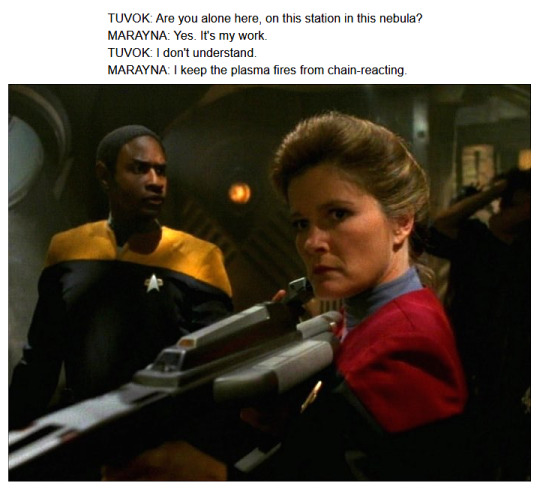








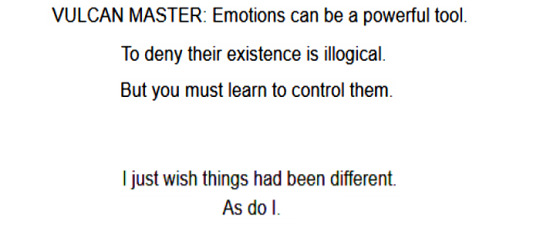

[Tuvok & Janeway: Control, Distance, Duty & Connection.] Sources: St Voyager Transcripts / Mitski 'First Love Late Spring' / Disco Elysium
#web weaving#star trek web weaving#st voyager#Kathryn Janeway#Tuvok#be the change you want to see in the world - make a long post about Tuvok & Janeway's similarities <- angel on my shoulder#I feel like a lot of people see them as 'opposites attract' sort of friends where Janeway is unhinged & Tuvok reigns her in#but in reality I think that while there is that element in there (exacerbated HEAVILY by their delta quad circumstances)#what I see most in their relationship is how they both value loyalty and duty above all and are extremely rigid with themselves#and the people around them. How they both have to maintain distance from others bc of their positions as captain & vulcan#I hate when people dismiss Tuvok as not being remotely interested in Maryana or Noss - it erases an interesting struggle that he and Janewa#both share - their desire to stay loyal to their spouses vs the 70 years of loneliness that that loyalty demands of them#But they BOTH triumph and they BOTH remain loyal (Tuvok until he returns to T'Pel and Janeway until Mark informs her that it's over)#and for both of them it's a little bit insane for them to do that.#Isn't it more interesting that Janeway and Tuvok both have feelings for people other than their spouses but don't give in#to that temptation?#They're both people who live very fastidiously by codes. Either written codes or moral codes - they very rarely if ever do things because#it's what THEY want to do. I'd say they're the least emotion-driven members of the crew and yes I'm including Seven because Seven#has a very...how to describe? It's a blunt and insular selfishness. She does what SHE wants to do and doesn't really care about others.#To me that's emotion-driven. Or...personal desire-driven? Not a bad thing at all but very different from Janeway & Tuvok who#are always more 'this is logical' or 'this is for the crew' rarely do they think 'this is what I want' bc they can't afford to#for different reasons (captain & vulcan)#they both also are in the most 'caretaking' positions on the ship from my POV. Security and Captain - both are directly in charge of#ship and crew safety.#Janeway & Tuvok#star trek voyager#st voy#when I say caretaking I'm NOT saying they're everyone's mom and dad or whatever - I'm saying they're in positions where they always#have to think about the greater good and the crew as a whole and how much danger is acceptable etc etc.#Janeway is always killing herself for the crew but Tuvok is right there beside her
99 notes
·
View notes
Text
next person who even jokingly says that rosemary’s lobotomy is what triggered the kennedy curse is getting their entire bloodline cursed
#for the record i don’t believe in the curse#sometimes life is horrific and filled with grief and there’s no supernatural element there#and ppl who say this are implying that the rest of the family deserved to suffer and die#like. besides the assassinations did kathleen deserve to die in a plane crash?#did john jr and carolyn deserve it to die in one too?#was jackie watching her husband’s brain explode just a consequence of something her father in law did?#im not defending the many awful things the kennedy family has done and been complicit in#but some of you are just malicious people#also joseph sr did not deserve his stroke#disability is not a punishment#anyways it’s clear that all some of you know about rosemary kennedy is that she was lobotomized and that’s where your research stops#she wanted to be a kindergarten teacher. she loved her family (especially her sister eunice)#she had desires and goals and dreams just like all the kennedys did#and if you look into any prominent american disabilities programs and orgs there’s a good chance the shriver branch is involved with them#they were the closest to rosemary out of any of the kennedy branches#rosemary is to american disability acceptance and activism what her brothers are to american politics#the best way to honor her is to love your disabled friends and family members unconditionally#liz informs you#rosemary kennedy#jfk#john f kennedy#bobby kennedy#rfk#kennedy family#nothing bad evah happens
31 notes
·
View notes
Text

😭✨
#remembered this is informally like little elemental sketches sideblog lol....#wade ripple#pixar elemental#elemental 2023#love the Light & Color design; did i mention. additive light blue + orange = magenta. rainbow refracting...reflecting...glowing...
36 notes
·
View notes
Text


A Pair of Delightful Comms for a Friend 💚
#my art#commission#object oc#These were incredibly fun to do and I had a blast doing them!!#I'm still aiming to improve clutter in my work and it feels like with these two I'm forming a better understanding of my own process of it#When it comes to my work like this backgrounds and scene elements more so pop into mind#Like a wave in a river. And the details I add afterwards are sticks and leaves that I just find and drop in#Light enough not to get lost in the detail of the water but not too much to complete muddy the water itself#I'm a personal sucker for tons of visual information and things to look at in art so thinking like has been a nice help so far!!#I'm just happy my water is readable so far it seems hehe#Also side note these designs are just REALLY fun#There's a lot going on in them by once I get into the swing of them I was just to help I figure it!!
26 notes
·
View notes
Text
Slytherin Locket Cave: The Life And Death Of Merope Gaunt
I wanted to explore one of the most interesting details of Voldemort’s characterization: the extensive protections around the Slytherin locket horcrux, which exist as a step-by-step re-enactment of Merope's suffering - referencing his mother's actual death, but perhaps more prominently, her state of drowning in despair in the Gaunt home due to her family.
The Locket's Significance
Tom Riddle initially hears of it from his uncle:
“Ar, he left her, and serve her right, marrying filth!” said Morfin, spitting on the floor again. “Robbed us, mind, before she ran off! Where’s the locket, eh, where’s Slytherin’s locket?” Voldemort did not answer. Morfin was working himself into a rage again; he brandished his knife and shouted, “Dishonored us, she did, that little slut! And who’re you, coming here and asking questions about all that? It’s over, innit.... It’s over....” He looked away, staggering slightly, and Voldemort moved forward.
Making his uncle look at him to Legilimize him, Tom views the Bob Ogden memory - and later wipes his uncle memories till that point. (I assume LV got all the same Merope details and memories that Dumbledore shows Harry in HBP, and likely even more.)
We first see Slytherin's locket when Marvolo strangles Merope with the chain to show it to Bob Ogden and claim they're Slytherin's descendants, and presumably Merope wore it for most of her life in the Gaunt shack. Merope runs off with Tom Sr. wearing it and per Burke it's the last possession she had days before her death:
“It was brought in by a young witch just before Christmas, oh, many years ago now. She said she needed the gold badly, well, that much was obvious. Covered in rags and pretty far along... Going to have a baby, see. She said the locket had been Slytherin’s. [...] She didn’t seem to have any idea how much it was worth. Happy to get ten Galleons for it.“
And Voldemort's enraged when Hepzibah Smith claims Merope stole it and was simply too dense to know its worth (which Merope clearly did, could hardly miss it with Marvolo's behavior):
“I had to pay an arm and a leg for it, but I couldn’t let it pass, not a real treasure like that, had to have it for my collection. Burke bought it, apparently, from a ragged-looking woman who seemed to have stolen it, but had no idea of its true value —” There was no mistaking it this time: Voldemort’s eyes flashed scarlet at the words, and Harry saw his knuckles whiten on the locket’s chain. “— I daresay Burke paid her a pittance but there you are.... Pretty, isn’t it? And again, all kinds of powers attributed to it, though I just keep it nice and safe....” She reached out to take the locket back. For a moment, Harry thought Voldemort was not going to let go of it, but then it had slid through his fingers and was back in its red velvet cushion. “So there you are, Tom, dear, and I hope you enjoyed that!” She looked him full in the face and for the first time, Harry saw her foolish smile falter. “Are you all right, dear?” “Oh yes,” said Voldemort quietly. "Yes, I’m very well....” “I thought — but a trick of the light, I suppose —” said Hepzibah, looking unnerved, and Harry guessed that she too had seen the momentary red gleam in Voldemort’s eyes.
The red flash in his eyes staying long enough for Hepzibah to notice.
2. Location
It's the sole horcrux in a location related to his childhood in the orphanage, and the cliffside location evokes Azkaban's (the fortress on a tiny island middle of the North Sea) - a seaside cave you have to swim to reach, described as "a bleak, harsh view, the sea and the rock unrelieved by any tree or sweep of grass or sand".
(When Sirius writes via tropical birds post-Azkaban escape, Harry thinks he's somewhere with sunlight and “palm trees and white sand” where he can't imagine dementors surviving for long).
My theory's that while Tom may've been covering up a violent fight, what ruined Amy and Dennis's minds so they were "never right afterwards" was a too powerful memory wipe - like Crouch Sr.'s on Bertha Jorkins - so they can recall they went into a cave with Tom but nothing more; that could also be a relevant association, as Tom used Legilimency to erase his uncle's memories and send him to Azkaban.
It starts with a concealed entrance and a "blood ward", something normally outside/protecting a magical home (interestingly HBP begins with Dumbledore having entered the Gaunt shack threshold and cursed fatally by the ring horcrux, entering the blood wards of the Dursleys' house, and ends in him dying after the Cave-as-Gaunt-house-simulation), with "denser than normal” darkness inside.
A concealed chained "ghostly green" little boat glides over a "great black lake" to the center island - matching descriptions of the boatride across the Hogwarts lake to the castle for first-years, and a reference to the fact that Nerope never got to attend school.
The Emerald potion, which Harry first thinks is a lamp, emits a green glow through the cavern, similar to Slytherin common room descriptions (“underground room with rough stone walls and ceiling from which round, greenish lamps were hanging on chains” / "it’s under the lake, so the light’s all green.”)
3. Drink of Despair
The potion is, of course, a liquefied dementor, which is linked to Merope in several ways.
The echoes of Lily's murder Harry hears near the dementors and his rage at Sirius betraying her parallels the memory of Merope being killed by her family and Tom’s rage at seeing it in his uncle’s memories - Morfin betraying her secret to their father and sending Marvolo after her, Merope's wordless pleading with her brother and father, Morfin’s cackle of laughter, and Merope screaming as she’s about to be killed by Marvolo.
“D’you know what I see and hear every time a dementor gets too near me?” Ron and Hermione shook their heads, looking apprehensive. “I can hear my mum screaming and pleading with Voldemort. And if you’d heard your mum screaming like that, just about to be killed, you wouldn’t forget it in a hurry. And if you found out someone who was supposed to be a friend of hers betrayed her and sent Voldemort after her —” (POA)
“She likes looking at that Muggle,” said Morfin, a vicious expression on his face as he stared at his sister, who now looked terrified. “Always in the garden when he passes, peering through the hedge at him, isn’t she? And last night —” Merope shook her head jerkily, imploringly, but Morfin went on ruthlessly, “Hanging out of the window waiting for him to ride home, wasn’t she?” “Hanging out of the window to look at a Muggle?” said Gaunt quietly. [...] “Is it true?” said Gaunt in a deadly voice, advancing a step or two toward the terrified girl. “My daughter — pure-blooded descendant of Salazar Slytherin — hankering after a filthy, dirt-veined Muggle?” Merope shook her head frantically, pressing herself into the wall, apparently unable to speak. “But I got him, Father!” cackled Morfin. “I got him as he went by and he didn’t look so pretty with hives all over him, did he, Merope?” “You disgusting little Squib, you filthy little blood traitor!” roared Gaunt, losing control, and his hands closed around his daughter’s throat. Both Harry and Ogden yelled “No!” at the same time; Ogden raised his wand and cried, “Relashio!” Gaunt was thrown backward, away from his daughter [...] Ogden ran for his life. Dumbledore indicated that they ought to follow and Harry obeyed, Merope’s screams echoing in his ears. (HBP)
(HBP's also the book Harry gives a step by step graphic description of Lily's murder to Slughorn; while Voldemort re-enacts Merope's through the cave protections)
Dumbledore says Morfin gave a "full and boastful confession" - which Tom Jr. Legilimized Morfin to give, explicitly referencing the last time his uncle attacked Tom Sr. in retaliation for Merope’s attraction to him and gloated to Marvolo about it - "He was proud, he said, to have killed the Muggles, had been awaiting his chance all these years."
While Harry only wants revenge for his parents with no thought for himself vs. LV framing his uncle for his pureblood family blasting him off their family tree, LV certainly has additional rage for his mother, and also doesn't forget his mother's screaming/general despair in a hurry, creating the locket cave decades after viewing the memories.
The dementors' varying effect and imagery is linked with - despair and hopelessness, losing the will to survive, not eating, victims huddling and hiding their faces and pleading, weakness and fainting, etc. Sirius says Crouch Jr. in Azkaban was "screaming for his mother by nightfall. He went quiet after a few days, though... they all went quiet in the end... except when they shrieked in their sleep.”
Which is exactly Merope's state in the Gaunt house with her father and brother:
Harry realized that there was somebody else in the room, a girl whose ragged gray dress was the exact color of the dirty stone wall behind her. She was standing beside a steaming pot on a grimy black stove, and was fiddling around with the shelf of squalid-looking pots and pans above it. [...] She looked a little cleaner than the two men, but Harry thought he had never seen a more defeated-looking person.
“Good morning,” said Ogden. She did not answer, but with a frightened glance at her father turned her back on the room [...]
And [Marvolo] spat on the floor at Ogden’s feet. Morfin cackled again. Merope, huddled beside the window, her head bowed and her face hidden by her lank hair, said nothing.
“‘Darling,’” whispered Morfin in Parseltongue, looking at his sister. “‘Darling,’ he called her. So he wouldn’t have you anyway.” Merope was so white Harry felt sure she was going to faint.
and:
Instead, [Marvolo] jeered at his daughter, “Lucky the nice man from the Ministry’s here, isn’t it? Perhaps he’ll take you off my hands, perhaps he doesn’t mind dirty Squibs....” Without looking at anybody or thanking Ogden, Merope picked up the pot and returned it, hands trembling, to its shelf. She then stood quite still, her back against the wall between the filthy window and the stove, as though she wished for nothing more than to sink into the stone and vanish.
Harry was on his feet once more, refilling the goblet as Dumbledore began to scream in more anguish than ever, “I want to die! I want to die! Make it stop, make it stop, I want to die!” “Drink this, Professor. Drink this....” Dumbledore drank, and no sooner had he finished than he yelled, “KILL ME!”
Merope's completely nonverbal throughout the scene, other than her screams. The Gaunts homeschooled, so she didn't even get to attend Hogwarts as an escape, as Tom, Harry, and others did and barely got an education (referenced by the boat ride resembling the first years’ boatride to Hogwarts). And she would've been forced to marry her brother and have his children.
(Morfin's association near the dementors is also his father - "'He’ll kill me for losing his ring,’ he told his captors over and over again [...] And that, apparently, was all he ever said again.")
What we hear of Merope as she's pregnant is the complete opposite of the dementors.
Merope wanted to live desperately enough that she sold a family heirloom for basically nothing a week before her death - so she was certainly trying to get food. (Comparatively, Harry in HBP due to grief for Sirius was "lying on his bed, refusing meals, and staring at the misted window, full of the chill emptiness that he had come to associate with dementors" until Dumbledore's letter came.)
Both times, Merope is facing death - with the Gaunts, she's too hopeless to speak even while pleading as she’s about to be killed; while pregnant with Tom (the only time we do hear Merope speak, secondhand), despite having wandered destitute for months and despite freezing and starving in midwinter and in the painful process of dying in childbirth, she has the will to speak until her dying breath - expressing hope for her son's future ("I hope he looks like his papa"), to give her son a name, Mrs. Cole saying it seemed "so important to the poor girl" to name him.
It’s reminiscent of how staying in Grimmauld Place is far worse for Sirius than living in a cave and eating rats on the run is, and where looking out for Harry also keeps Sirius going and gives him a purpose. 12GP is likewise linked with Azkaban/dementors/death (elaborated on here).
Voldemort's awareness of all this is probably the best indication, among others, that he doesn't share Dumbledore's viewpoint that Merope chose to die; and his response to that would likely be very like Harry's about Sirius - that she didn't want to go at all.
“I don’t care. You can have it, I don’t really want it.” Harry never wanted to set foot in number twelve, Grimmauld Place again if he could help it. He thought he would be haunted forever by the memory of Sirius prowling its dark musty rooms alone, imprisoned within the place he had wanted so desperately to leave.
Voldemort is similarly haunted by the memory of Merope - but unlike Harry he craves the aspects of his family and pureblood society that killed his mother even as he resents it; wants the house, the heirlooms, to remake himself into the Heir of Slytherin, grasping at power but also any and all connection he has to family.
4. Death and Burial
The last part is the drinker collapsing in weakness after finishing the potion, the desperate thirst, and when they crawl to drink from the lake, the Inferi army of the dead dragging them to death by drowning in icy water.
Referencing the months Merope wandered London destitute, her death in childbirth, and burial in a pauper's grave.
In Greek myth, Charon ferries deceased souls in his boat across the rivers of the underworld (often the Acheron, the river of misery, in some sources a lake), and those without proper burials are left behind to haunt the world as ghosts.
Proper burials or lack thereof a recurring canon motif, Voldemort himself telling the forces against him in DH to "Dispose of your dead with dignity" and Azkaban has a mass graveyard of prisoners, buried by dementors instead of their family.
5. Kreacher
I assume this is the significance of Voldemort asking for a house-elf and his horrific torture of Kreacher, since LV has also considered humans disposable for decades and killed many for this task already (the Inferi) - Kreacher is meant to represent Merope.
Merope was the servant of the household, and there's the general implication of lifetime service/"slavery" to her family.
“But the villagers’ shock was nothing to Marvolo’s. He returned from Azkaban, expecting to find his daughter dutifully awaiting his return with a hot meal ready on his table. Instead, he found a clear inch of dust and her note of farewell, explaining what she had done [...] The shock of her desertion may have contributed to his early death — or perhaps he had simply never learned to feed himself."
LV also recreates this family dynamic into the Death Eaters - which he calls his “true family” and who are his slaves and call him Master.
"as [Kreacher] drank, he saw terrible things... Kreacher’s insides burned... Kreacher cried for Master Regulus to save him, he cried for his Mistress Black, but the Dark Lord only laughed" (DH)
LV potentially thinks of a house-elf as a being who "deserves it" "instead" (and is part of the establishment/property he thinks are his birthright. And it's telling of house-elves enslavement and isolation that the only people Kreacher can ask for to save him in the midst of it are his owners.)
The details are a bit unclear, but LV likely already tested the potion/other defenses before turning the locket into a horcrux; he used Kreacher to empty the basin of potion to place the finalized locket, as there's no backdoors to drinking it.
So LV leaves right after the locket is placed, not bothering to wait until Kreacher's dead and underestimates his ability to Apparate out - and considered him so insignificant that he didn’t remember who Kreacher is in OOTP despite using him for a very important plot to lure Harry, directly contributing to his downfall.
And, ironically, Regulus via Kreacher plays the role of "dutiful daughter/servant running off with the locket and leaving a farewell note explaining what he's done".
#merope gaunt#tom riddle#lord voldemort#will probably be an informal part 2 of scattered thoughts#i never write actual organized metas this is a first. and probably too long#but absolute fave element of LV characterization#and the way it sets up The Cycles TM#the violence against merope is haunting the narrative etc.#well. harry not wanting the pureblood family establishment of the house of black is a bit ruined#by him going back to the house and fucking INHERITING AND NOT FREEING KREACHER -_-#i’ve seen different interpretations on how much info about merope voldemort actually has#like in some fics he’s legilimized the memory of his mother’s death but not the scene in the gaunt house#in some he’s legilimized both or none. etc.#i think he’s 100% seen the bob ogden one but most likely also viewed his mother’s death and maybe viewed riddle sr.’s memories of her too#ik it's a common interpretation that he thinks his mother chose to die too (understandably given jkr's intent)#and other than everything in this meta i'll probably elaborate on why that's incorrect at some point
110 notes
·
View notes
Text
alright new totk headcanon: ganondorf did try to put gloom everywhere when he woke up as a mummy, but rauru is actually the one who caused the upheaval to put every single chance behind link in his fight against ganondorf
#totk#rauru#ganondorf#link#look rauru is skeevy!!! he is a manipulative bitch!!! he would absolutely do shit like this and not tell you!!!#all the ruins have zonai elements in it and bear zonai technology!!!#he was torn from ganondorf as much as ganondorf was torn from him!!#and ganondorf actively tries to stop link from accessing certain sensitive informations contained in zonai ruins#not to mention the shrines#who are just there as military training/purification devices against demons/ganondorf#he would have all the motive in the world --while ganon doesn't why would he do that#but here it's like an unstoppable force meet immovable object sort of deal --and then something separates the two#that's got to be messy#(I know the reality is: they didn't think about character motives like ganondorf uses a false zelda to lead you to the secret stones)#(to awaken the sages that will eventually fight him like girl what are you doing!!!!!)#(but in a better game.....)
78 notes
·
View notes